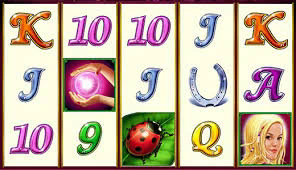# The Origin of Twister: A Game That Changed Party Nights Forever
## Introduction to Twister
Twister is not just a game; it’s a legendary party favorite that has entertained generations. Combining elements of physical skill and strategy, it breaks the ice in any social setting. But when did this revolutionary game first hit the market? In this article, we delve into its origins, cultural impact, and the evolution of Twister since its launch.
## The Birth of Twister
Twister was created by Charles Foley and Neil Rabens in 1966. Initially, it was intended as a game called “Kings’ Footsie.” The concept revolved around a simple idea: intertwining players’ bodies on a mat while trying to adhere to simple color-coded instructions. The game was a playful exploration of physical boundaries, encouraging interaction and laughter.
## The Game’s Debut
The first public introduction of Twister happened at the 1966 American International Toy Fair in New York City. The game was showcased by Milton Bradley, a company known for producing innovative and engaging board games. Twister generated immediate buzz due to its unique concept and physical nature, attracting a diverse audience. If you were an attendee that year, witnessing a demonstration would have been unforgettable—adults and kids alike squirming and twisting into comical positions.
## The Role of Television
In 1966, the television show “The Tonight Show Starring Johnny Carson” played a pivotal role in Twister’s popularity. During a memorable segment, actress Eva Gabor participated in the game on live television. The sight of Gabor tangled in a comedic mess captured the attention of millions, solidifying Twister’s place as a must-have party game. This exposure catapulted Twister into the public consciousness, leading to skyrocketing sales.
## Twister’s Early Success
By 1967, Twister had become a sensation. The game appealed to a broad demographic—young adults seeking a fun night in, families looking to liven game night, and college students hosting parties. Its blend of physical activity and strategy encouraged friendly competition, which quickly became a staple at gatherings. Within a year, Twister became synonymous with fun, camaraderie, and light-hearted chaos.
## Cultural Impact and Controversy
Twister didn’t just carve its niche in the realm of games; it also stirred debates regarding its appropriateness, especially among conservative groups. Some critics labeled it as provocative, raising concerns about its intimate physicality. Despite this controversy, Twister’s popularity only grew, and it eventually became recognized as an iconic element of pop culture. It has appeared in numerous films, television shows, and even college campuses, further cementing its place in American lore.
## The Evolution of Twister
Over the decades, Twister has undergone various adaptations and expansions. From themed editions like “Twister: Harry Potter” to “Twister: The Nightmare Before Christmas,” the game has found fresh appeal across different audiences. These variations often introduce new rules or elements, maintaining interest while adhering to the classic gameplay that fans adore.
## Engaging the Digital Age
With advancements in technology, Twister has also ventured into the digital realm. Mobile apps and video games inspired by the traditional mat have emerged, offering a new twist on the beloved classic. These digital incarnations often include augmented reality features that enhance interaction, allowing users to connect with others remotely while still embracing the spirit of the original game.
## The Global Reach

From its American roots, Twister has spread globally. Translated into multiple languages, it has found fans in countries ranging from Germany to Japan. Different cultures have embraced the game, often infusing it with localized rules and variations. Twister’s appeal continues to transcend geographical boundaries, promoting not only laughter but also an appreciation for physical play.
## Twister Beyond the Living Room

The interactive nature of Twister has made it popular in settings beyond the living room. It has been used in fitness classes, team-building exercises, and even charity events. Its adaptability allows facilitators to incorporate Twister into various contexts, proving the game’s versatility in promoting teamwork and joy.
## Twister as a Means of Socialization
One of Twister’s most significant contributions is its role as a social catalyst. The game often serves as an icebreaker, dissolving inhibitions and encouraging player interaction. Whether at a family gathering or social event, Twister has a magical quality that fosters connections and memories. The inherent silliness encourages laughter, inevitably leading to shared experiences.
## The Future of Twister
As we look into the future, Twister seems poised to remain a staple in the world of games. Its ability to adapt and resonate with new generations ensures its longevity. We can expect to see more themed editions, digital adaptations, and hopefully, continued innovation that respects its rich legacy.
## Conclusion
In summary, Twister is much more than just a game. From its humble beginnings in a toy fair to becoming a global sensation, it has woven itself into the fabric of social interactions and entertainment. Its ability to break barriers, promote laughter, and foster connections is nothing short of remarkable. As we continue to explore new ways to enhance gameplay, Twister will undoubtedly remain a beloved classic, ensuring that its legacy continues for years to come. Whether you’re a seasoned player or trying it for the first time, one thing is for certain: Twister remains a game that brings people together in joyous chaos.
